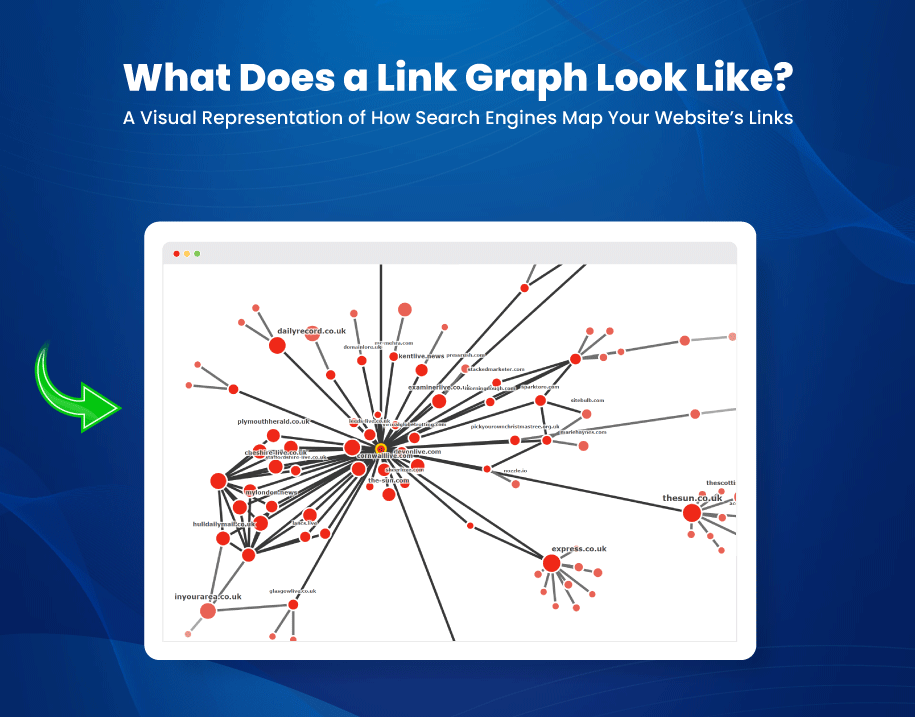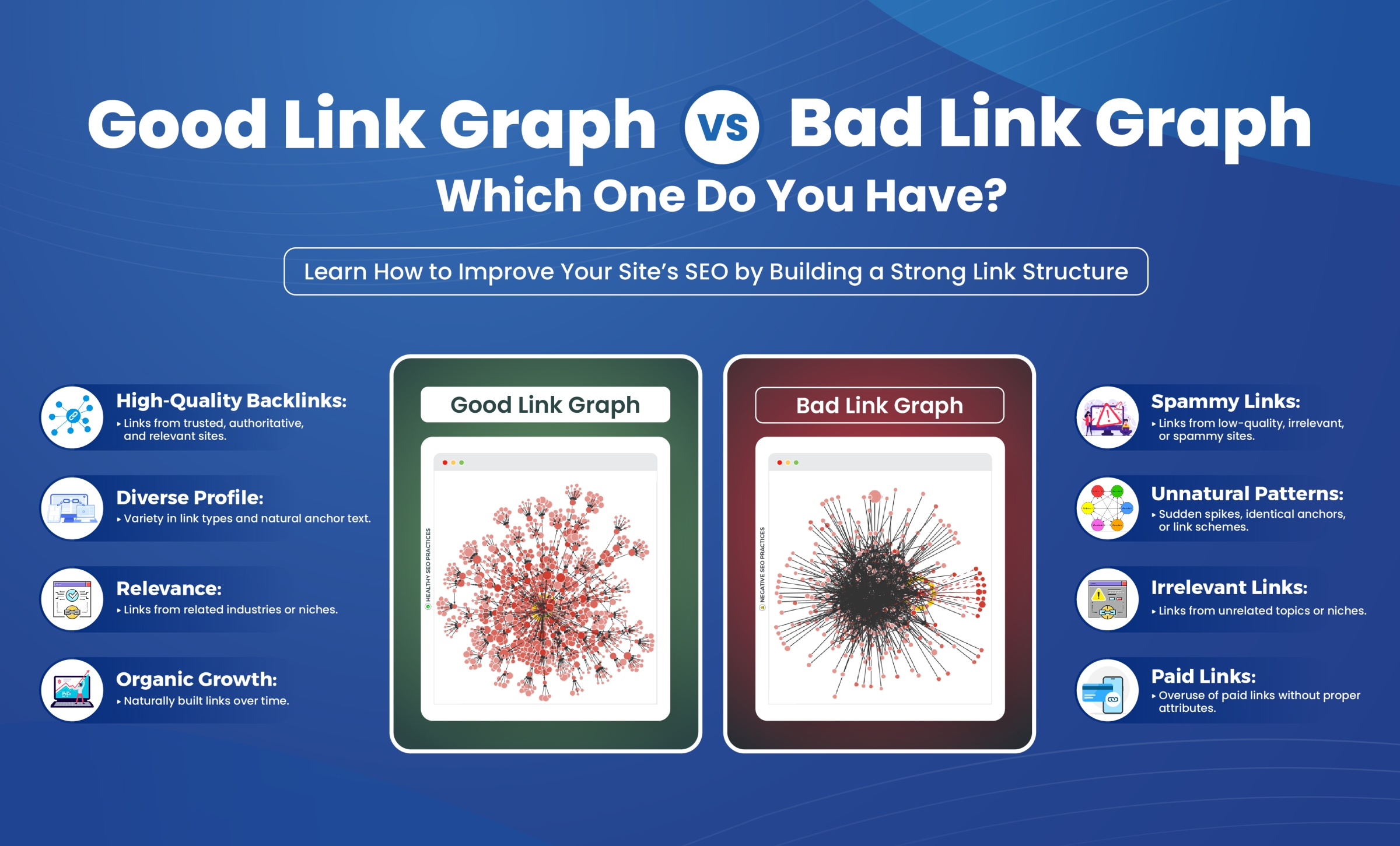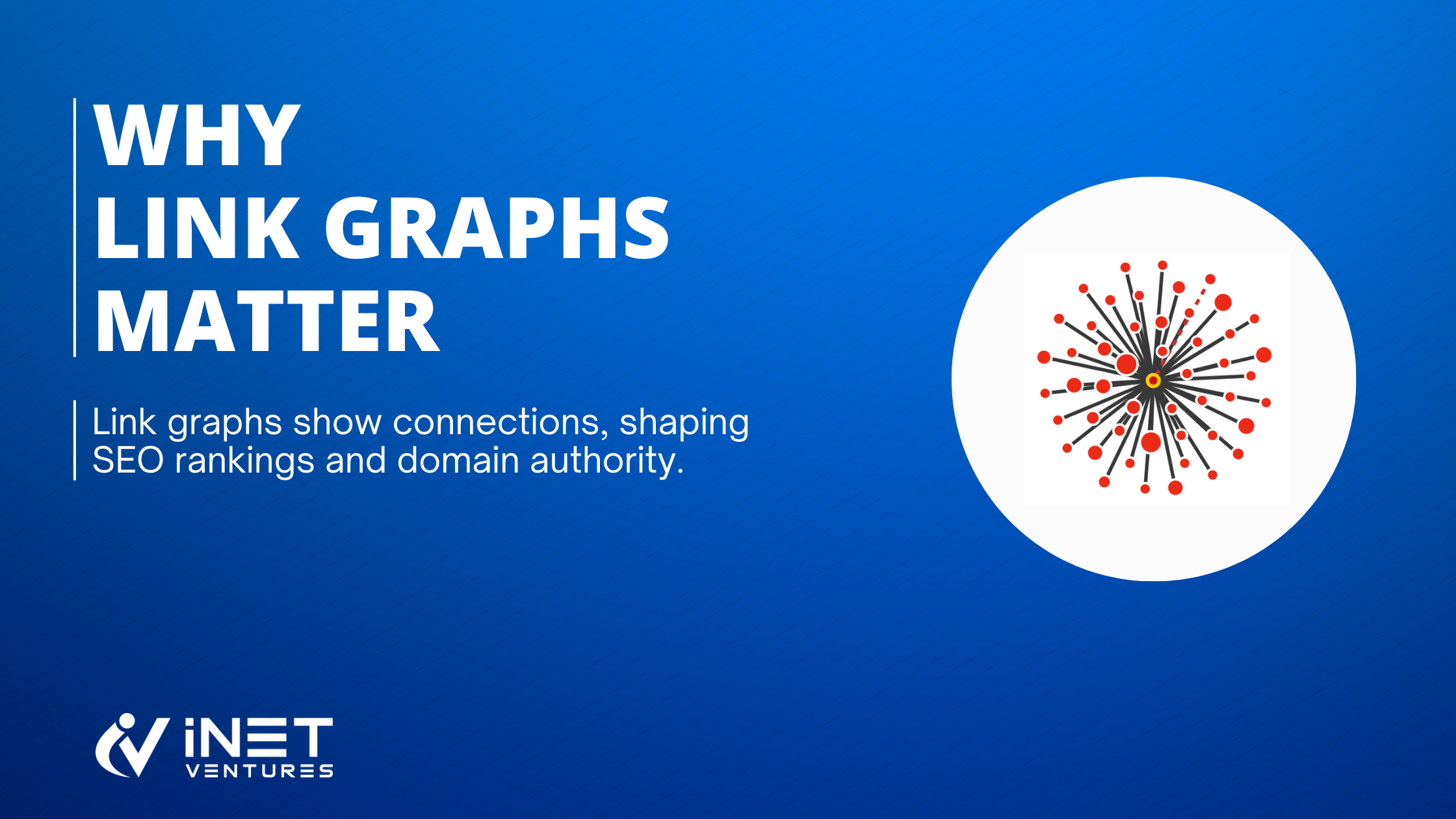When you’re a website or business owner, it’s important to use every tool at your disposal in order to gain whatever advantage you can. After all, it’s a tough world out there!
One of the most important things you need to understand when you’re a website owner is the link graph. It’s a powerful, intuitive SEO tool that can assist you in understanding your site’s metrics and taking action.
If this is the first time you’re encountering link graphs and you need some help, don’t worry – we’ve got you covered. Here’s our rundown on what link graphs are and why they matter!
So, what are link graphs?
In essence, a link graph is a map of the internet created by search engines or by SEO tools to make sense of what can be a sprawling and disconnected online world.
As you can probably surmise by the name, a link graph helps search engines to determine which sites link to which other sites, and there’s a lot of information search engines can glean from these graphs.
For instance, a link graph can help a search engine like Google or Bing to determine whether a site’s links are high-quality or whether the site is engaging in poor linking practices.
Not only that, but a link graph can also help to determine what the relationship is between different pages on the same site, so it’s important even if your pages don’t link to external sources.
Link graphs can also instruct a search engine regarding what the focus of a website is.
If, for instance, a link graph shows that a site is linking frequently to gaming sources, let’s say, or to home improvement articles, then that link graph can show a search engine that the site that’s linking out is probably also about those topics.
From a visual perspective, link graphs show sites as individual nodes on the graph, with each connection between sites represented by lines or arrows.

How do link graphs work?
You probably know that when Google – or any other search engine, for that matter – crawls your website, it’s building a map of all the pages contained within that site.
Not only does Google index those pages, but it also notes every link that either leads to or away from those pages.
A link graph is a data representation used by search engines to map relationships between websites or pages, helping algorithms assess link quality, relevance, and authority.
The link graph may not be available as a visual representation of your site for you to see, although many SEO software suites do include a link graph that you can study in order to understand your website better.
Why do link graphs matter?
If you’re keeping up, you’ve probably already realised why link graphs matter for your site.
In essence, if Google or other search engines can see that your site’s link graph is sound, then they will judge your page’s authority accordingly.
If, however, your link graph looks suspect – if your pages are linking out to a lot of different pages on different topics, for instance – then your site may be judged as spammy or low-quality.
As such, the way a search engine builds your link graph is of paramount importance when it comes to ensuring that your site has strong domain authority and is treated with respect by search engines.
Internal links help guide users through your site and establish a clear site hierarchy, making it easier for search engines to crawl and index your content. External links, on the other hand, connect your site to authoritative sources, signaling credibility and relevance to search engines.
Tools to Build and Analyze Link Graphs
When it comes to creating your first link graph, there are a number of tools available to help you analyze and optimize your link graph. Each offers unique features to improve your SEO strategy:
- Google Search Console the primary tool that you need for link analysis is Google Search Console, which is free and an integral tool that gives diagnosis of your site’s internal and external links. It highlights the pages with the most incoming links and flags up broken or problematic links for easy fixing.
- Ahrefs takes it a step further with some sophisticated link graph visualizations that show how your site links to others. It also analyzes backlink quality, domain authority and spam scores, and monitors changes over time so you can track progress.
- Moz another essential tool is, which helps you check if a link is worth pursuing and provides authority checks. The tool even features a spam score metric, which you can use to locate and eliminate potentially harmful backlinks.
With these tools, you will be able to paint a picture of the link structure of your site, fix weaknesses, and make sure that your link graph is compliant with search engines best practices for better SEO performance.
Promote Your Brand with Link Building
Supercharge your SEO with our trusted link building services. Gain high-quality backlinks, improve search visibility, and drive more organic traffic. Start building authority the smart way today.
Explore Link Building ServicesHow can you make sure your link graph is high-quality?
We’ve discussed what link graphs are and why they matter, so now, let’s take a look at some of the things you can do to improve your link graph.
Thankfully, as a website or business owner, there’s always something you can do to ensure your link graph contains high-quality links and pages. Here we go!
- Ensure all links are relevant. This is, perhaps, the most important thing you can do to ensure your link graph is sound. Make sure that every page you’re linking to, whether it’s internal or external, is a relevant and high-quality source that augments the content from which it’s being linked. That means no linking to dubious or spammy sites, no linking to irrelevant information that doesn’t pertain to your content or niche, and no stuffing your content with links rather than peppering them organically throughout the text.
- Work on your anchor text. Not only is the link itself relevant, but the anchor text you use for the link is also important. For instance, if you’re linking to a page about the best gaming keyboards, you’ll want to find a natural way to refer to this link in your text. Don’t simply look to SEO terms for this; consider how your link should fit in the natural flow of your sentences. This way, you can make sure that links are relevant for readers as well as conducive to good SEO.
- Monitor broken pages. Google doesn’t like it when sites link to a preponderance of broken pages or links. As such, you should perform regular audits to ensure that you’re linking to sites that are still active on the web. Similarly, you should keep a close eye on your site to make sure none of your pages break; if they do, and other sites are linking to them, then your site’s link graph could suffer as a result.
- Keep an eye on what sites are linking to you. Whether external sites are linking to you or not is largely out of your control, but you can keep an eye on where you’re being linked. If Google sees that your pages are being linked by a lot of spammy sites, your link graph may be treated as spammy or low-quality, and that’s something you don’t want.

Conclusion
Link graphs aren’t necessarily the first thing many website owners or SEO experts think of when planning an SEO strategy, but they are very important for monitoring the quality of a site.
Always think about what effect a decision is going to have when you make it. Is this page going to look good for your link graph? Are you linking to the right content? Are your internal links high-quality?
By always keeping these tenets in mind, you’ll be setting yourself up for a strong link graph, and a high-quality site in turn!
As the founder of iNet Ventures, James deeply understands the world of SEO, link building, growth, and strategy. After achieving remarkable results for agencies and websites, his approach combines industry knowledge with forward-thinking tactics, which embark on analytical tools and AI.


